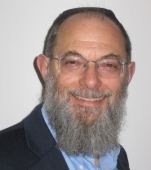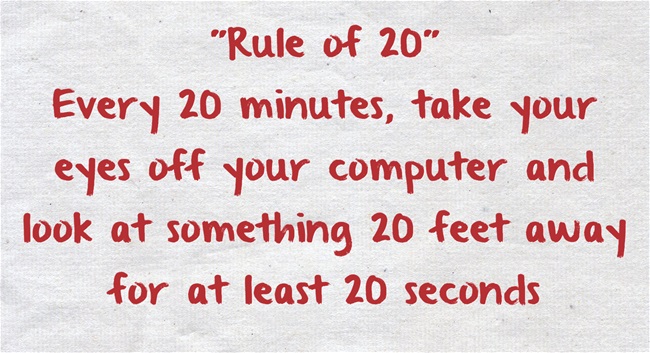4/2/14
“Dr. S., my eyes are red and burning at the end of my work day.”
“Patient, what sort of work do you do? Tell me something about your work conditions.”
“I am a computer graphics artist. I sit and stare at my twenty-seven inch HD screen for hours on end gently adjusting the composition of each pixel. My studio is air-conditioned but not humidified, so after some hours of work, I feel dry as a bone.”
“One more question…can you cry tears? Say, when you peel and slice an onion?”
The need to blink
Blinking is a complex function of the eyelids that when completed results in a clean, refreshed, re-wetted corneal surface. The tears that are washed across the outside of the eye with each blink bring oxygen and other nutrients to the outer cell layer aiding in the rebuilding and revitalizing of the surface tissue.
Blinking is characterized by a full sweep of the upper lid over the eye to meet the lower lid. The completion of this motion is performed gently without squeezing. And, to be effective full eye closure needs to be repeated fairly often. Blink rates vary according to investigators but most sources report an average of between six and ten full blinks per minute under normal viewing circumstances.
The anti-blink problem of our generation
In olden times – say the years between 1750-1950 – the most aggravating problem to the ocular surface was a good book or intense study. The reader would concern himself with the text at hand and slowly his eyes would dry until a “rest break” was necessary.
Environmental or vocational changes to our lifestyle over the generations have promoted reduced blink rates. Most recently in this negatively developmental progression is the effect of the television screen, the CRT, the LED screen, the handheld and pocket computer on the blink rate. It appears that as attention level increases, blinking suffers. First the eyes close less, then incompletely, and finally rarely only when surface dryness drives the individual to desperate measures. He must blink or (so he feels) his eyes will pop out of their sockets.
Adding insult to injury increasingly over the decades is air conditioning – both heating and cooling – when not humidified. Staring at console screens in dry environs speeds the desiccation of the cornea and results in discomfort.
The surface of the eye is a biological system. Living systems require some degree of moisture. If the cells of the eye – or any biological surface — are permitted to dry out, they will die. Dead corneal cells fall off the cornea and float in the tears on the surface of the eye until washed away with a blink. Until the surface is cleaned the dead cells are considered by the eye to be foreign bodies with the consequent irritation and induced reflex to blink.
When cells die and fall off, the underlying nerve endings send pain signals to the nervous system. The sensation can be felt as pain, burning, or mere irritation or itching depending upon the severity of cell loss.
How to handle environmentally induced dry eye
After the ocular surface is dry most treatments will seem to make matters worse: to cause burning and stinging, perhaps, even more than the dry eye itself. Any tear substitute, any amount of blinking will be irritating at first. But, that is really all that can be done at this stage: wetting and blinking.
Prevention
As in many conditions, the best treatment, in fact a cure, for recurrent environmentally induced dry eye is prevention. For the eye that has a naturally flowing tear supply, the act of blinking is the surest prevention to stinging and burning after a day’s work at the computer. Additionally, many sources recommend using the ‘rule of 20’: after each twenty minutes of work, look up from the text or away from the screen; blink and refocus on the page twenty times. This repetitive exercise simultaneously re-wets the eye and relaxes the focusing mechanism of the eye.
The result is relaxed and comfortable eyes that can continue to provide important and high quality information for longer hours of work.
 Bezalel Schendowich, OD
Bezalel Schendowich, OD
Chairperson and Education Coordinator, JOS
Fellow, IACLE
Member, Medical Advisory Board NKCF
Sha’are Zedek Medical Center, Jerusalem, ISRAEL


